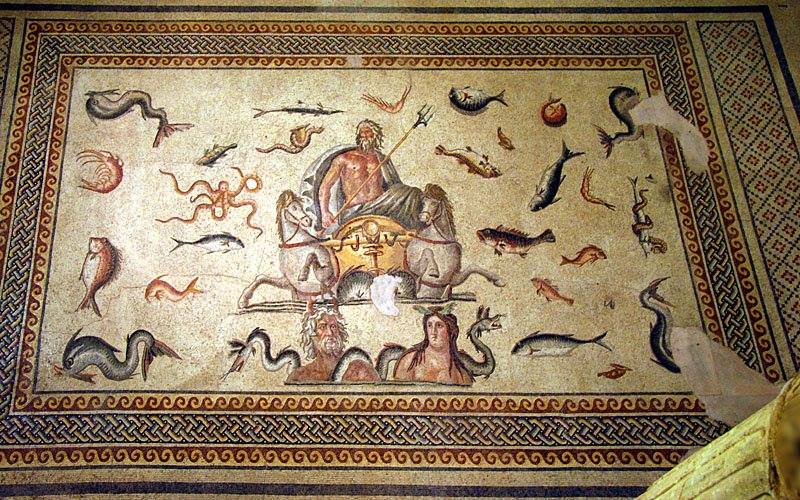 There's much to observe in Book 3 -- given the famous tales of Actaeon and Diana, Semele and Jove, Tiresias, Narcissus and Echo -- each one is fascinating in itself, and enriched in context with each of the others. Before we get to those tales, one more comment on Cadmus and the Serpent. When the serpent rises up, look what he can see:
There's much to observe in Book 3 -- given the famous tales of Actaeon and Diana, Semele and Jove, Tiresias, Narcissus and Echo -- each one is fascinating in itself, and enriched in context with each of the others. Before we get to those tales, one more comment on Cadmus and the Serpent. When the serpent rises up, look what he can see:Ille volubilibus squamosos nexibus orbes
torquet et inmensos saltu sinuatur in arcus,
ac media plus parte leves erectus in auras
despicit omne nemus, tantoque est corpore, quanto
45si totum spectes, geminas qui separat arctos.
Perseus text.
The snake winds his scaly coils in restless writhings, and, shooting upwards, curves into a huge arc. With half its length raised into thin air, it peers down over the whole wood, its body as great, seen in its entirety, as that Dragon that separates the twin constellations of the Bear. Kline.The coiled serpent rises, arcs, then looks down (despicit), and takes in omne nemus - the entire grove. Then, as if seen from below by a man, we get a description of the entire serpent - if you looked upon (spectes) the total body of it (corpore...totum), it would seem as big as Hydra, the dragon constellation between the Great Bear (formerly known as Callisto) and the Little Bear (Arcas). Hydra, the longest constellation in the sky, takes more than six hours to rise completely.
So along with the other interesting elements of this tale is this sudden mirroring of gazes, each of which takes in a totality -- the serpent takes in the entire forest, the narrator, extrapolating, gives us the totality of the serpent in the form of a very large constellation.
It seems worth mentioning because at several points in the book much will hinge on how much of a thing one can see, and what happens when one has the fortune, or misfortune, to see more of certain thing than one ought, or, less.
Quid spectas? Why do you gaze? What are you looking at? These questions haunt Book 3, as does the baleful prophecy: "that which you hunt, that which you see as your worst nightmare, and try to kill? At the end of your seemingly blessed life, that will be you."Cadmus gets to see what it's like to see the whole after he's killed the serpent:
Dum spatium victor victi considerat hostis...Ovid might be playing with considerat here - the word for "considering, studying, looking closely" was often parsed as con + sideris - "to observe the stars," as sidera means stars. This etymology, though disputed, was popular.
So we have Cadmus con-sidering the serpent, now dead and on the earth, bleeding. The serpent is seen, as it were, via two modes of consideration: once by an ideal viewer who sees its totality as if it were the constellation Hydra, and once by Cadmus, who sees the entire body of the serpent as inert corpse.
Nothing got past Ovid. This book will be about totalities, Gods being seen and not seen, humans making judgments about what they see and to what extent they see. Much more will be involved, but here, at the outset, the moment Cadmus can consider, take the measure of, the creature he's killed, he hears the voice of (his) Doom and it is asking him why he's looking at what he's looking at:
Dum spatium victor victi considerat hostis,
vox subito audita est; neque erat cognoscere promptum
unde, sed audita est: “Quid, Agenore nate, peremptum
serpentem spectas? et tu spectabere serpens.”While the conqueror stares at the vast bulk of his conquered enemy, suddenly a voice is heard. It is not easy to imagine where it comes from, but it is heard. ‘Why gaze, son of Agenor, at the serpent you have killed? You too shall be a serpent to be gazed on.’


No comments:
Post a Comment